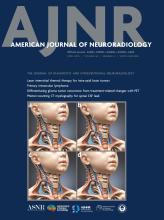Jump to comment:
- Page navigation anchor for Finding intracerebral hemorrhages on fetal MRI may provide an opportunity to treat and attenuate the severity of schizencephalyFinding intracerebral hemorrhages on fetal MRI may provide an opportunity to treat and attenuate the severity of schizencephaly
We read with great interest the article published by George et al. (George et al., 2025), which retrospectively investigated a cohort of 22 patients prenatally diagnosed with schizencephaly by magnetic resonance imaging between 1996 and 2022. The authors interpreted 64% of the cases as secondary to lesions of vascular, infectious, placental or genetic origin, with intracerebral hemorrhage identified in half of the patients. Interestingly, genetic causes were found in only two cases, leaving six patients without an apparent reason for the development of the malformation. Considering that intracranial hemorrhages can be difficult to detect after the resolution of the hemorrhagic episode, it is possible that some cases of schizencephaly without an identified cause are also secondary to lesions. As typically occurs in schizencephaly, the neurological outcomes observed were catastrophic, with epilepsy being the most common, along with cerebral palsy, speech difficulties and intellectual decline.
Our research group has been dedicated to understanding the pathophysiological events that lead to the development of schizencephaly in a murine model, identifying key stages that could become therapeutic targets. We recently demonstrated that hemorrhage, neuroinflammation, hypoxia, and oxidative stress are present as early as 3–4 hours after injury, preceding the development of the malformation, when induced by transcranial freezing injury in neonatal mice (Savoldi et al., 2025;...
Show MoreCompeting Interests: None declared.












